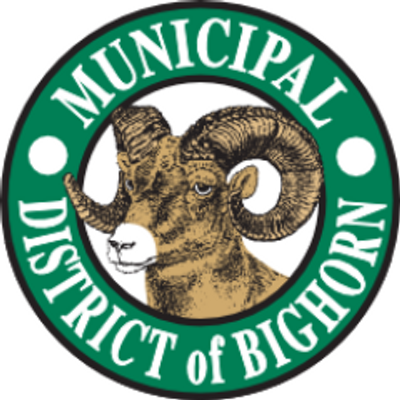BIGHORN – Thanks to newly announced provincial funding, the MD of Bighorn may get a better understanding of how regional public transit can be incorporated into its Bow Valley hamlets.
Last Thursday (March 7), the Alberta government announced $14,400 to the MD of Bighorn for a transit feasibility study.
“I’m very grateful for the grants that have been extended and I hope they are sufficient to provide for a quality study,” MD of Bighorn Reve Dene Cooper said.
Since the introduction of Roam public transit in the Bow Valley in 2011, the service has grown to offer local transit in Canmore and Banff, as well as a regional route between the two communities. Last year the service announced additional routes to Lake Louise and popular tourist destinations like Johnston Canyon and Lake Minnewanka. It has seen ridership numbers as high as 110,000 in the summer months.
“I know because of the success of Roam in Canmore, Banff and now out to Lake Louise that this is something the MD of Bighorn might be looking at participating in especially to connect towns like Exshaw and Dead Man’s Flats,” Banff-Canmore MLA Cam Westhead said.
The MLA said he is aware of staffing concerns from business owners in the Bighorn area, attracting new hires and staff retention especially with the lack of a regional transit.
“That will help if the MD of course decides, depending on the feasibility, if they decide to proceed with that. It not just helps locals get around, but it also helps businesses grow and make sure they can keep staff because that is always a challenge around here,” Westhead said.
In addition to possibly increasing staffing numbers, other potential perks include connecting Bighorn residents with nearby services and cutting down on greenhouse gas emissions – if the study proves feasible.
“Transit touches on a lot of different aspects of things that are important to people in this valley,” Westhead said, noting affordability, environmental consciousness and tourism.
“It also touches on helping people access services in rural areas because you know folks that live in Dead Man’s Flats might come [to Canmore] for a doctor’s appointment, or go shopping, or access mental health services ... so it just helps figuratively make communities closer.”
However, the cost-analysis needs to prove beneficial to move forward towards establishing a new transit route or stop in communities like Exshaw, Dead Man’s Flats or Harvie Heights.
“When we spend public dollars we want to make sure we are getting the biggest bang for our buck ... so doing the planning study up front helps us to determine, do we try this path, or if the ridership is not there it’s not worth the investment,” Westhead explained.
According to data from the 2011 census, the MD of Bighorn has a total population of 1,341 with Exshaw (362), Harvie Heights (175), Lac Des Arcs (144), and Dead Man’s Flats (121) as the major hubs, with close to 500 municipal district residents living in rural areas.
“Council is firmly behind the idea of finding possibilities within transportation for a rural municipality organized on hamlets,” Cooper said.
“The study we have envisioned will bring us the understanding necessary to look at these in a prioritized way and also to understand the demand of capital investment and operational investment for the local taxpayers.”
The MD of Bighorn applied for the grant last December and was awarded the full amount requested.
More than $200 million was provided to 33 municipalities with $141.4 million of the grants funded from the province’s Climate Leadership Plan.




